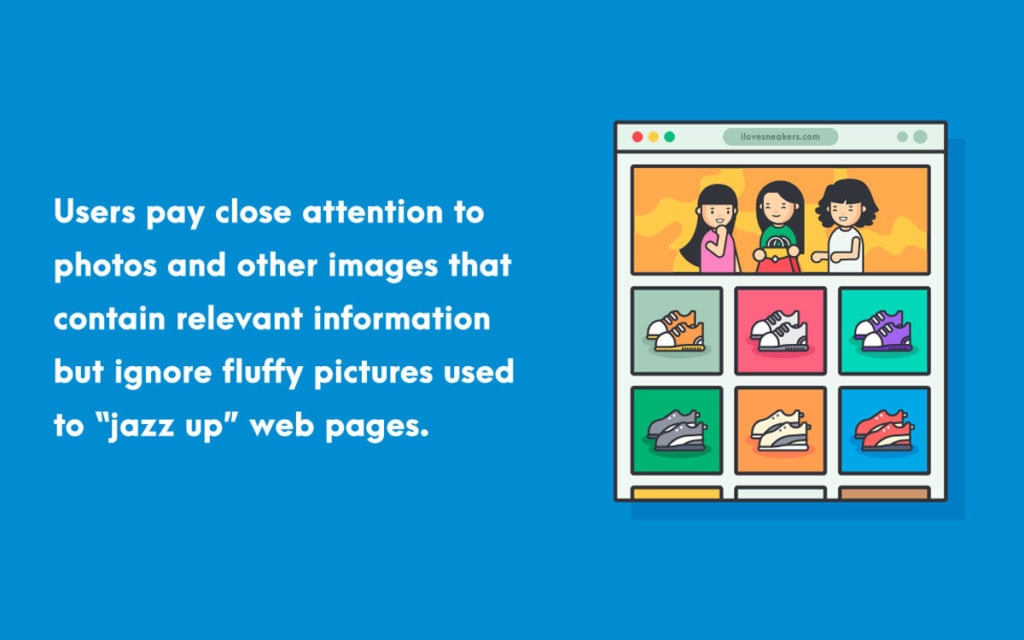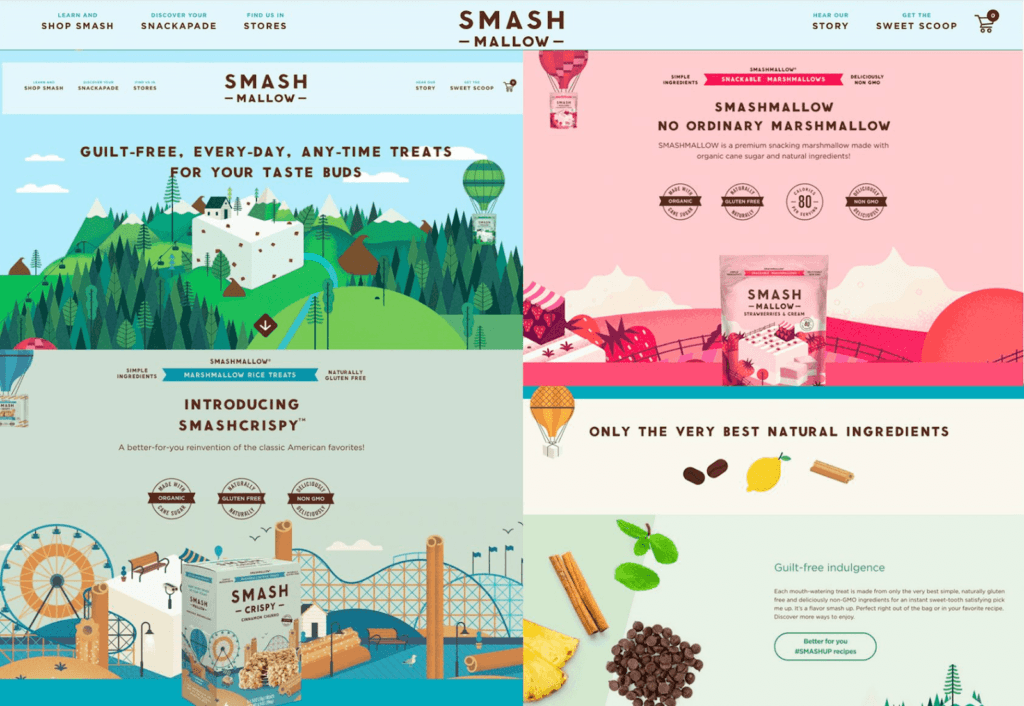How to Create a Visual Content Marketing Strategy
In today's cluttered digital landscape, visual content has become vital to any effective content marketing strategy. With 88% of millennials more likely to engage with visual content, marketers can no longer rely on text-based content alone to capture audience attention and drive engagement.
Implementing a defined visual content marketing strategy that utilises visual assets like images, videos, and graphics can set your brand apart and allow you to connect with your customers in more memorable and impactful ways. This article will explore best practices for creating an integrated visual content marketing strategy tailored to your business goals.
Table of Contents
Why Visuals Resonate with Modern Audiences
There are a few key reasons why visual assets tend to garner more attention than text-only content:
- Faster processing and recall: Viewers can process visual information 60,000 times faster than text. Visuals are also recalled six times better than text alone.
- Increased engagement: Articles with images receive 94% more views than text-only articles. Viewers spend 100% more time on pages with videos.
- Enhanced storytelling: Visuals trigger emotions and allow brands to connect through storytelling far better than blocks of text.
- Higher conversion rates: Pages with relevant images can increase conversions by up to 95%. Product videos can drive up to a 144% increase in purchases.
With these benefits in mind, let's consider how to craft a compelling visual content marketing strategy tailored to your unique brand and audience.
Developing a Strategic Visual Content Marketing Framework

A strategic visual content marketing framework provides the necessary structure and guidelines for creating visual assets that align with broader business goals. Follow these steps when developing your custom visual content strategy:
Set Goals and KPIs
As with any successful marketing initiative, define your goals and key performance indicators (KPIs) for visual content. Potential visual content goals may include:
- Increase website traffic
- Boost social media engagement
- Educate customers
- Increase brand awareness/reach
- Drive conversions/sales
Relevant KPIs could include:
- Website traffic from visual content
- Social reach/engagement per visible post
- Views per visual asset
- Sales influenced by visual content
Setting benchmarks through goals and KPIs allows you to quantify results and optimise your efforts over time.
Align Visual Content to Sales Funnel Stage
Your visual content goals and metrics should map to your customer journey and sales funnel. Identify what types of visual content you want to produce:
- Attract new visitors higher up the funnel
- Convert mid-funnel leads closer to a sale
- Delight existing customers
This informs the visual formats to leverage and dictates messaging and creative direction.
For example, an explainer video may attract and educate new visitors, while an interactive product demo converts leads closer to purchasing.
Audit Existing Visual Assets
Audit all current visual marketing content across your website, blog, and social channels. Document elements like:
- Visual formats used
- Content of current visuals
- Performance data of assets (views, clicks, etc.)
- Visual content gaps you aim to fill
Assess what visual content resonates best with your audience and where the most significant opportunities exist to utilise visual formats better.
Define Visual Content Mix
Next, outline the specific types of visual content you want to produce and leverage based on your audit findings and goal frameworks.
Potential visual content formats include:
Images
- Photos
- Infographics
- Illustrations
- Image collages
Video
- Explainer videos
- Product/service demos
- Testimonial videos
- Live-streamed video
- Interactive video
- Animated video
Other Visuals
- Slide decks
- Presentations
- Maps/process flows
- Memes
- Quizzes/assessments
- Interactive calculators
- 3D model visualisers
Identify which visual formats align best with your content goals and buyer's journey stage. Define an ideal mix of visual content tailored to how your audience best engages and converts.
Crafting Visual Content That Converts

Simply showing images or videos isn't enough when creating compelling visual content. To drive conversions, visual assets must educate and inspire audiences to take action.
Hook Viewer Attention
In an age of shrinking attention spans, the first 3-5 seconds are critical for convincing viewers that your visual content is worth watching. Some best practices include:
- Intriguing hook: Open with a surprising fact, question or demonstration that grabs interest upfront
- Quality visuals: High-resolution, eye-catching visuals signal production value early
- Concise value prop: Communicate what specifically viewers will learn to incentivise further watching
Structure and Flow
The middle of your visual content must continue building viewer engagement through innovative structure and flow:
- Organised sequences: Group related concepts and visuals into coherent sequences
- Smooth transitions: Use zooms, animation and templates to transition between ideas
- Impactful text overlays: Reinforce and enhance visuals with concise key text points
- Appropriate pacing: Move through ideas briskly enough to retain attention without glossing over nuances
For example, an explainer video could open with an eye-catching animation and data point, segmented into sequenced topics using title cards, graphics and b-roll transitional footage to maintain flow and interest.
Drive Conversions Through Calls-to-Action
No visual content marketing asset is complete without clear calls-to-action (CTAs) tailored to moving audiences along the conversion funnel. Ways to compel conversions include:
- Action-focused language: Use imperative verb tense to spur urgency
- Strategic CTAs: Share buttons, site links, offers and downloads to capture visitor information
- Compelling end frames: Loop your unique value proposition and most critical CTA as a final frame
Optimising and Amplifying Visual Content

You've produced high-quality, conversion-focused visual content – but don't stop there. Proper optimisation and amplification through social media are required to maximise the engagement and ROI of your visual investment.
Optimise for Search & Shareability
Be sure visual assets are discoverable by ideal viewers through keyword-optimized titles, metadata descriptions and tags. The video can be transcribed further to improve SEO value.
Make sharing frictionless by proactively adding post options as overlays or end frames within the visual content.
Repurpose Visual Assets
Extend your visual content's lifespan by repurposing it into various formats tailored to different platforms. For example:
- Snippets: Cut short clips from videos for social teasers
- Sequences: Slide out still frames for social posts or ads
- Behind-the-scenes: Share bonus creation footage on Instagram stories
- Audio: Repurpose insightful audio as podcast episodes
Repurposing provides new entry points for users to engage your content across channels.
Promote Through Paid Amplification
While organic social promotion is a baseline, paid amplification rapidly expands your visual content's reach to new demographics.
Strategically promote visual posts using each platform's advertising tools according to which metrics matter most for your KPIs: views, clicks, followers or conversions.
Tracking Performance & Continual Optimisation
To gauge visual content success against your benchmarks and KPIs, robust analytics and tracking must be implemented from launch.
Monitoring Metrics
Platform tools like YouTube Analytics, HubSpot Video SEO, Instagram Insights and Google Analytics reveal valuable engagement and conversion data surrounding visual content.
Analyse which specific visual pieces perform best and why based on the following:
- Traffic sources
- Views
- Social engagement
- Conversions influenced
- Audience retention heatmaps
Continually monitor returns on ad spend and fine-tune your promotion strategy over time per results.
Optimising Based on Insights
Frequent performance check-ins allow you to isolate the strengths and weaknesses of both content and distribution.
Use learnings to tailor and improve every aspect of your process – from repurposing the highest traction assets in new ways to enhancing ideation of upcoming visual pieces around topics and techniques proven to engage your audience most effectively.
Key Takeaways
Implementing a strategic visual marketing approach takes concerted planning, production and promotion efforts yet drives outsized results. Here are a few essential tips to recap:
- Map visuals to metrics: Set conversion goals and funnel stages, then develop aligned visual content to progress viewers appropriately.
- Prioritise viewer retention: Format visual content by balancing intriguing hooks, smooth flow between ideas, and clear calls to action to drive conversions.
- Amplify reach through paid: Sponsor visual content across platforms to put it in front of many ideal viewers.
- Let data guide optimisation: Track performance frequently and iterate on the highest traction visual concepts and distribution strategies.
As increasing the impact of visual storytelling and buyer engagement becomes a business imperative in 2023, taking a strategic, metrics-driven approach to visual content is critical to rising above the digital noise.
Frequently Asked Questions About Visual Content Marketing Strategy
Here are answers to 5 common questions related to building an effective and high-converting visual content marketing strategy:
What types of visuals are most effective in content marketing campaigns?
The highest-performing visual content educates or entertains audiences while communicating key brand messaging and value propositions. Video, interactive content, and infographics grab most viewers' attention and engagement across channels.
How much of the budget should I allocate to visual content production?
As a rule of thumb, experts recommend allocating 25-35% of your marketing budget to visual content, including creation and promotion. The level of investment required depends on the visual production quality and distribution scale needed to achieve KPIs.
How can I repurpose one visual asset into multiple formats?
Strategic repurposing is critical to optimising visual content ROI. For example, an animated brand video could be recut into a short GIF or still frame for social posts, the audio exported as a podcast episode, and the script formatted into a blog post or downloadable PDF asset.
Should I focus on creating single “hero” visual assets or more videos?
Balance producing “tentpole” visual pieces to anchor campaigns with lower production videos like testimonials and demos to sustain a regular publishing schedule. Hero content should align to new offerings or initiatives, converting high-funnel viewers while volume drives continual mid-lower funnel leads.
What is the most essential visual content performance metric to track?
While sheer views or social engagement provide awareness measurements and valuable audience feedback, the most critical metric is actual business conversions influenced by visuals. Rigorously track and optimise visual content specifically for generating measurable pipeline and revenue.
Focusing visual content marketing initiatives on driving measurable conversions based on data-backed insights separates truly effective strategies that contribute to growth.
